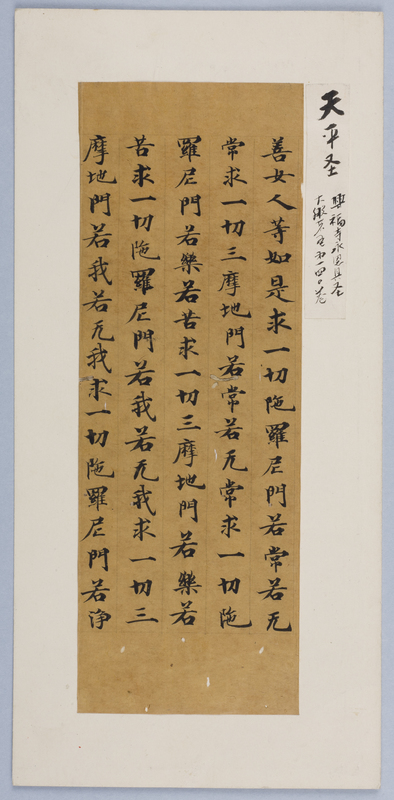Introduction of Buddhism to Japan
Buddhism was introduced to the Japanese archipelago in the sixth century. From relatively early on in its history, the veneration of scriptures was understood to be a central characteristic of this religion. The earliest recorded chanting of the “complete Buddhist canon” (issaikyō 一切経) took place at a royal palace in 651. In 673, Sovereign Tenmu 天武 (d. 686) issued a decree to copy the issaikyō at a Buddhist monastery, Kawaradera 川原寺. Sutra-copying boomed as a government-led operation in the Nara period (710-794), when a scriptorium was established within the imperially sponsored monastery called Tōdaiji 東大寺 (Nara prefecture). A scribe became an occupation, which instigated the standardization of calligraphy for copying Buddhist scriptures.
As the literacy rate among the intellectual elites rose, copying of Buddhist scriptures became less a statewide project and more a private expression of devotion. For most of these copied scriptures, the central point was in the act of copying and donating. Upon their donation, therefore, often they were stored in a monastery’s sutra repository and rarely or never used for rituals.
Below, see the commonalities in the balance of characters and sharpness of strokes in the three samples from the Nara period.


